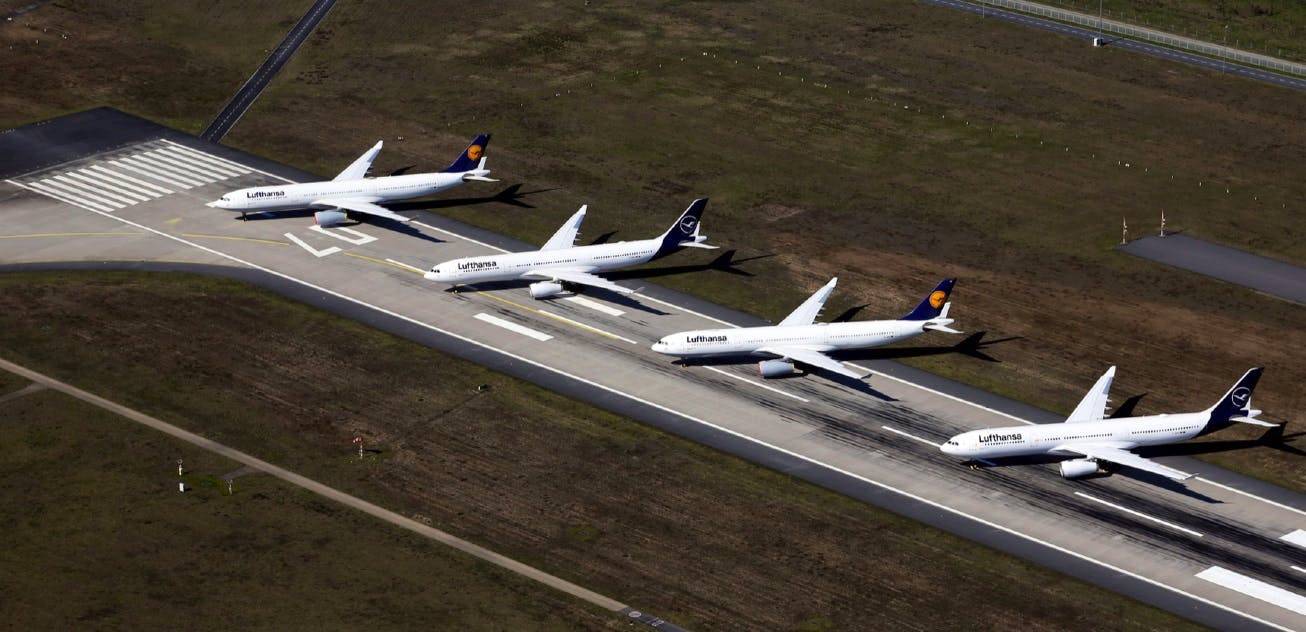Analysis
How long will the liquidity of European airlines last?
No ticket sales, no cash. Europe's airlines are gradually running out of money without fresh money. Here is an overview of liquidity reserves and expenditures.

Parked Lufthansa aircraft in Frankfurt: Barely any regular flights are taking off anymore.

Parked Lufthansa aircraft in Frankfurt: Barely any regular flights are taking off anymore.
With the outbreak of the corona crisis, liquidity has become a key issue for airlines. If nobody books flights, there’s no new cash in their accounts. At the same time, however, many bills still have to be paid – personnel expenses, leasing or maintenance fees or rent payments for offices.
This is likely one of the reasons why airlines are already actively selling tickets for flights that are still far in the future. Others advertise vouchers for flights in the next few years, or try to convince passengers to rebook their flights instead of cancelling them. According to the International Air Transport Association Iata, 75 percent of members had liquidity reserves for less than three months at the beginning of the year. In addition to cash, liquidity includes all assets that can be immediately converted into cash.
Evidence of the depth of the crisis
But how much liquidity do the European Airlines actually have and how long can they survive on it? Using available financial figures, the analysis company Bernstein Research has compared the liquidity of the largest European airline groups with the expected costs in the second quarter that is now beginning. These figures show how long the cash will last – without government support or new loans. The figures show how deep the current crisis is.
According to the analysts, this is an estimate based on available figures, which is intended to provide an overview of the situation. Airlines’ finance departments work with information that is updated daily. Either way, the figures are something to take as a basis for orientation.
Liquidity for 17 weeks…
The figures show that a network Airlines need significantly more liquidity than Airlines who only offer point-to-point traffic. Personnel costs, airport fees and costs for other service providers require a lot of money. According to Bernstein’s estimates, Lufthansa faces weekly costs of 222 million euros. This compares to liquidity of around 3.8 billion. The low-cost airline Wizz Air has only about 1.8 billion euros in liquidity, but the weekly costs are only 12 million euros (see chart).
According to these calculations, the Lufthansa Group would have liquidity for 17 weeks without raising new funds, while Air France-KLM would have money for 14 weeks. IAG, the parent company of British Airways and Iberia, is best placed among the three major network airline groups in Europe. According to the Bernstein analysis, their liquidity will last 31 weeks. The British-Spanish company has around 4.6 billion in liquidity, with weekly expenditure amounting to 150 million.
… or for 144 weeks
Their low cost base is now paying off for Europes low-cost airlines. Easyjet would still have liquidity for 53 weeks, a little more than a year. Ryanair would last twice as long: 106 weeks. Wizz Air would last longest with reserves for 144 weeks.
Norwegian is doing the worst of all the airlines examined. There the money would only last nine weeks. But: Bernstein’s overview did not include state aid or newly received loans. Norway has meanwhile granted the airline state aid.
Liquidity is not equal to solvency
What is also important in this context: liquidity and solvency are different categories. For example, companies also have assets that they can convert into cash in the medium term in order to survive liquidity crises. In the case of airlines, for example, these assets include aircraft or real estate.
